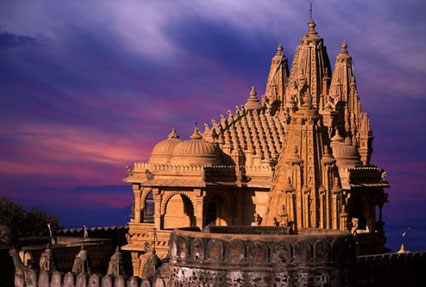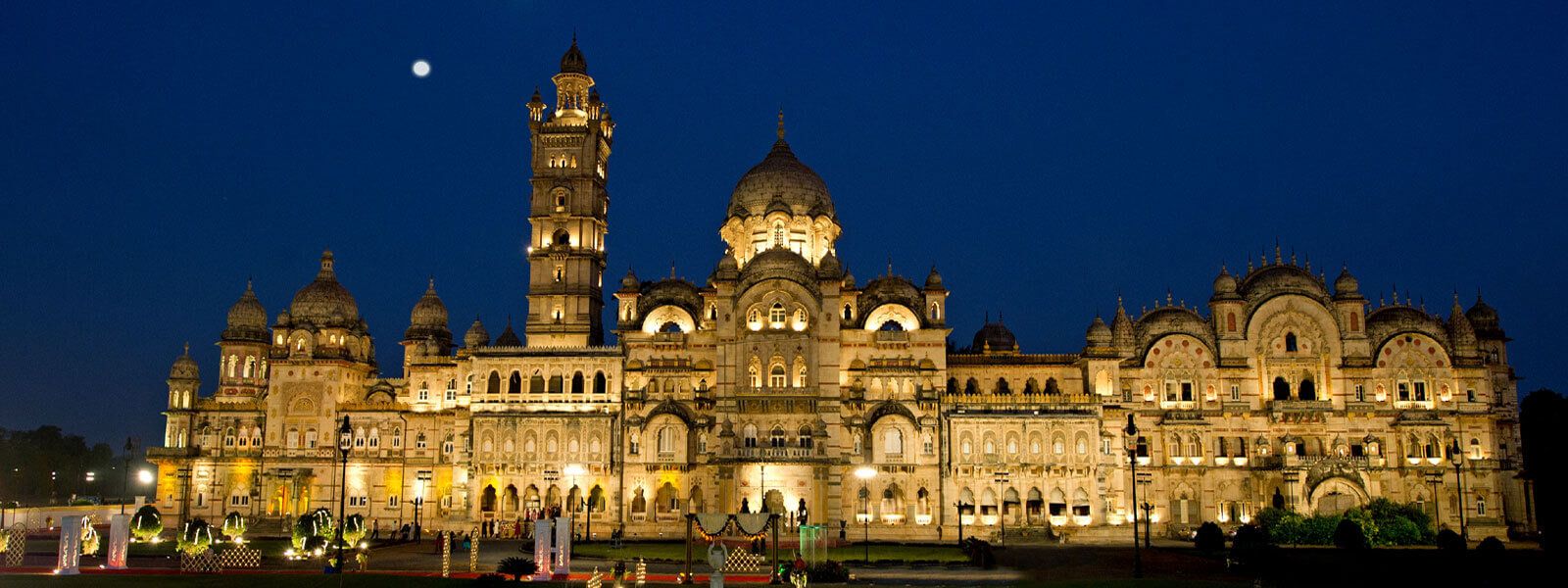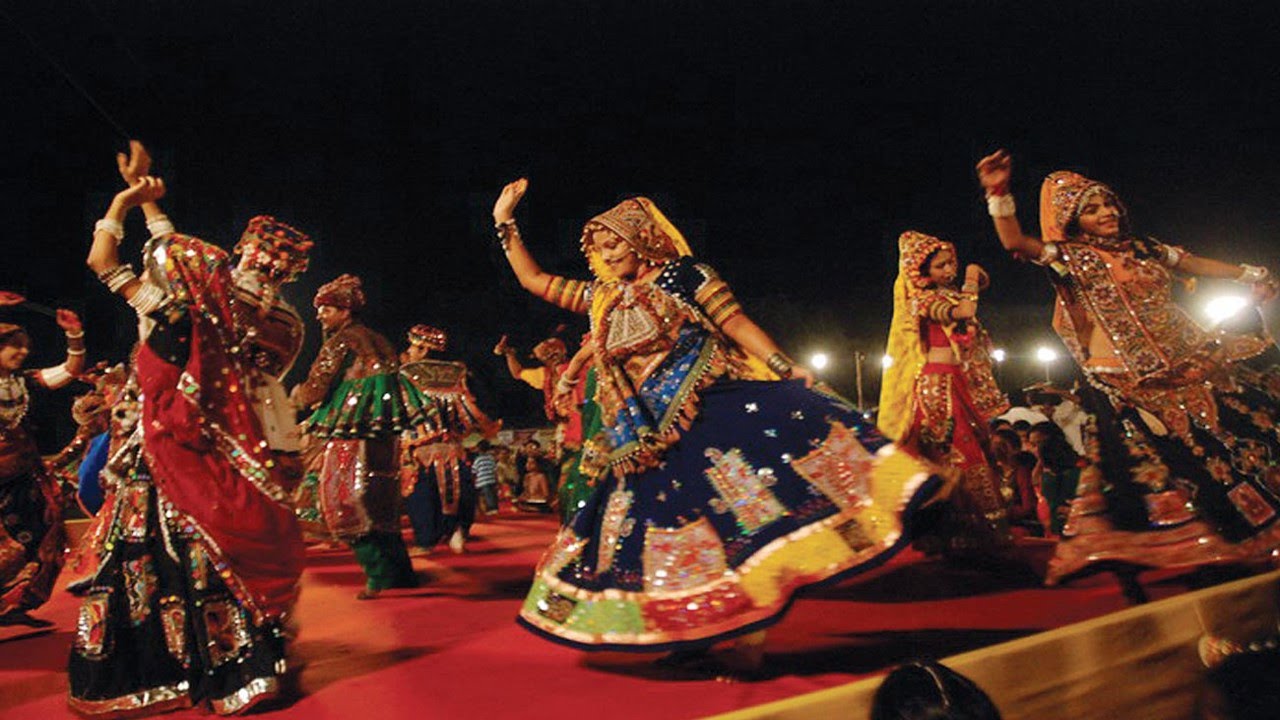 TravelINDIA.com
TravelINDIA.comWelcome to Gujarat

HOME
Modern-day Gujarat is derived from Sanskrit term Gurjaradesa, meaning the land of the Gurjars, supposedly a subtribe of
the Huns who ruled Gujarat in the 8th and 9th centuries CE.Parts of modern Rajasthan and Gujarat have
been known as Gurjaratra or Gurjarabhumi (land of the Gurjars) for centuries before the Mughal period.
- Gujarat has the longest sea shore compared to any other indian state.
- It is locally known as jewel of the west.
- Gandhinagar is the greenest capital city in whole Asia.
- The world's third largest denim manufacturer is Ahmedabad's Arvind Mills.
- Gujarat is the only state in India to have a Statewide gas grid of 2,200 Km.
- Over 60% of Indian Population in North America is Gujarati.
- The first all vegetarian Pizza-Hut was opened in Ahmedabad.
- Gujarat is the only home of Asiatic Lions.
- Gujarat is the only present natural habitat of lions outside Africa.
- Tourists centres:
- Gir National Park-Junagadh
- Dwarkadhish Temple
- White Desert-Great Rann of Kutch
- Sabarmati Ashram-Ahmedabad
Gujarat was one of the main central areas of the Indus Valley Civilization.It contains ancient metropolitan cities from
the Indus Valley such as Lothal, Dholavira, and Gola Dhoro. The ancient city of Lothal was where India's first port was
established. The ancient city of Dholavira is one of the largest and most prominent archaeological sites in India,
belonging to the Indus Valley Civilization. The most recent discovery was Gola Dhoro. Altogether, about 50 Indus Valley
settlement ruins have been discovered in Gujarat.
The ancient history of Gujarat was enriched by the commercial activities of its inhabitants. There is clear historical
evidence of trade and commerce ties with Egypt, Bahrain and Sumer in the Persian Gulf during the time period of 1000 to
750 BC.There was a succession of Hindu and Buddhist states such as the Mauryan Dynasty, Western Satraps,
Satavahana dynasty, Gupta Empire, Chalukya dynasty, Rashtrakuta Empire, Pala Empire and Gurjara-Pratihara Empire, as well
as local dynasties such as the Maitrakas and then the Chaulukyas.
 The early history of Gujarat reflects the imperial grandeur of Chandragupta Maurya who conquered a number of earlier
states in what is now Gujarat. Pushyagupta, a Vaishya, was appointed the governor of Saurashtra by the Mauryan regime. He
ruled Giringer (modern day Junagadh) (322 BC to 294 BC) and built a dam on the Sudarshan lake. Emperor Ashoka, the
grandson of Chandragupta Maurya, not only ordered engraving of his edicts on the rock at Junagadh but asked Governor
Tusherpha to cut canals from the lake where an earlier Mauryan governor had built a dam. Between the decline of Mauryan
power and Saurashtra coming under the sway of the Samprati Mauryas of Ujjain, there was an Indo-Greek defeat in Gujarat
of Demetrius. In 16th century manuscripts, there is an apocryphal story of a merchant of King Gondaphares landing in
Gujarat with Apostle Thomas. The incident of the cup-bearer torn apart by a lion might indicate that the port city
described is in Gujarat.
The early history of Gujarat reflects the imperial grandeur of Chandragupta Maurya who conquered a number of earlier
states in what is now Gujarat. Pushyagupta, a Vaishya, was appointed the governor of Saurashtra by the Mauryan regime. He
ruled Giringer (modern day Junagadh) (322 BC to 294 BC) and built a dam on the Sudarshan lake. Emperor Ashoka, the
grandson of Chandragupta Maurya, not only ordered engraving of his edicts on the rock at Junagadh but asked Governor
Tusherpha to cut canals from the lake where an earlier Mauryan governor had built a dam. Between the decline of Mauryan
power and Saurashtra coming under the sway of the Samprati Mauryas of Ujjain, there was an Indo-Greek defeat in Gujarat
of Demetrius. In 16th century manuscripts, there is an apocryphal story of a merchant of King Gondaphares landing in
Gujarat with Apostle Thomas. The incident of the cup-bearer torn apart by a lion might indicate that the port city
described is in Gujarat.
POPULAR
TOURIST DESTINATIONS
Ahemdabad
Junagadh
Kutch
Vadodra
Gandhinagar
Dwarka
Jamnagar
 The early history of Gujarat reflects the imperial grandeur of Chandragupta Maurya who conquered a number of earlier
states in what is now Gujarat. Pushyagupta, a Vaishya, was appointed the governor of Saurashtra by the Mauryan regime. He
ruled Giringer (modern day Junagadh) (322 BC to 294 BC) and built a dam on the Sudarshan lake. Emperor Ashoka, the
grandson of Chandragupta Maurya, not only ordered engraving of his edicts on the rock at Junagadh but asked Governor
Tusherpha to cut canals from the lake where an earlier Mauryan governor had built a dam. Between the decline of Mauryan
power and Saurashtra coming under the sway of the Samprati Mauryas of Ujjain, there was an Indo-Greek defeat in Gujarat
of Demetrius. In 16th century manuscripts, there is an apocryphal story of a merchant of King Gondaphares landing in
Gujarat with Apostle Thomas. The incident of the cup-bearer torn apart by a lion might indicate that the port city
described is in Gujarat.
The early history of Gujarat reflects the imperial grandeur of Chandragupta Maurya who conquered a number of earlier
states in what is now Gujarat. Pushyagupta, a Vaishya, was appointed the governor of Saurashtra by the Mauryan regime. He
ruled Giringer (modern day Junagadh) (322 BC to 294 BC) and built a dam on the Sudarshan lake. Emperor Ashoka, the
grandson of Chandragupta Maurya, not only ordered engraving of his edicts on the rock at Junagadh but asked Governor
Tusherpha to cut canals from the lake where an earlier Mauryan governor had built a dam. Between the decline of Mauryan
power and Saurashtra coming under the sway of the Samprati Mauryas of Ujjain, there was an Indo-Greek defeat in Gujarat
of Demetrius. In 16th century manuscripts, there is an apocryphal story of a merchant of King Gondaphares landing in
Gujarat with Apostle Thomas. The incident of the cup-bearer torn apart by a lion might indicate that the port city
described is in Gujarat.
